You do not see these fish everywhere, just a few specific spots. But when you do see them, they are hovering in large schools. Exposed sites with large drop-offs are the usual places to find Pyramid Butterflyfish…
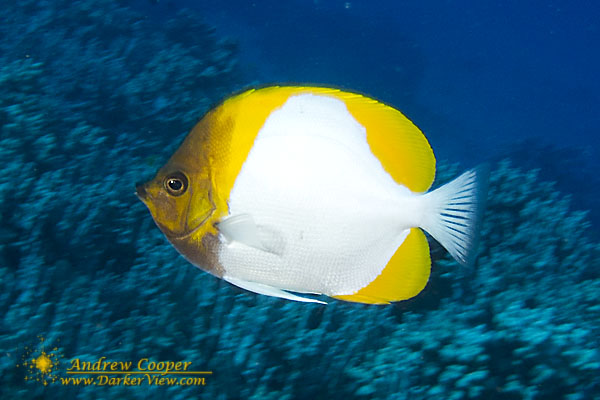
When you want to see the stars, find someplace dark
Supposedly common, I have been poking about in caves for over four years without seeing these attractive lobsters. In this cave were several of them. I caught this guy in a corner, he wanted to get past me, but could not get past the light. Good thing for him it isn’t lobster season.

With my face behind the camera, and looking the other direction, I did not notice the commotion I had caused. A swirl of colorful motion caught the corner of my eye. I turned to see a horde of butterflyfish attacking a seemingly uninteresting rock face. I watched for a moment before a memory triggered… Of course!

It is likely the gang of butterflyfish used my presence as an opening to overwhelm the Sergent. Local lore is full of examples of this behavior. The passage of a larger predatory fish, or a diver, will give the guarding male Sergeant a pause. A slim opening upon which the gang will swarm the eggs and feed. During Sergent breeding season it is not unusual for divers to mention schools of butterflyfish or tangs following them in and around the nesting areas.

I literally have to push my way through the swirling fish to examine the nest. The rock is covered with eggs, an amazing number of little purple dots covering an area of about a meter square. Despite the ongoing feeding frenzy, the nest seems intact, with nearly every bit of the rock covered with the neat little lines of eggs.
Hoover1 makes an interesting observation… “One can only wonder why Sergent eggs are so conspicuous while most damselfish eggs are hardly visible”
1) Hawaiian Reef Fishes, John P. Hoover, Mutual Publishing, 2008
Endemic to the Hawaiian Islands the Gold Lace Nudibranch is common, very common. I find these critters nearly every time I poke my head into a cave along the Kohala coast. I was thrilled when I found my first one, but now? Still a pretty animal and worth an exposure or two.
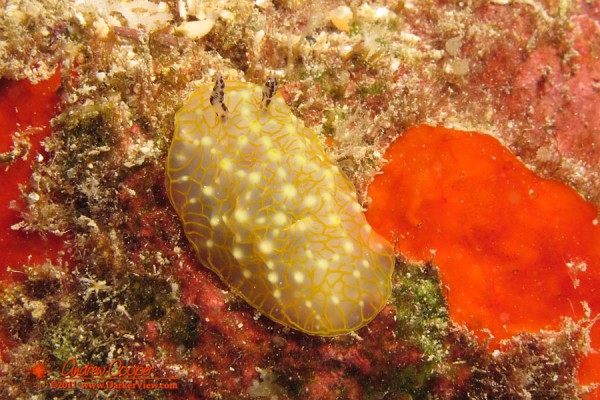
The needle on the air gauge is edging into the red, time to consider the inevitable. I must soon head for the surface, the end of the dive.
For over an hour I have lived in a world so different than the normal human existence. I have navigated in three dimensions, swimming not only down and around obstacles, but over them, sometimes hovering above the terrain. A breath in, maybe a breath out, I fine trim my buoyancy to glide up or down, maneuvering just inches above the coral. A few times in the dive I add or release air from the BCD to trim buoyancy. This is a form of locomotion so very different than walking on land. It is so much like flying that you can not help but to make the comparison.
I have no choice, my tank exhausted, I turn and head upwards. Just below the surface I hit the button, air hisses and the BCD fills, I am soon floating amongst the waves. Removing the regulator I take a first breath of un-bottled air. Looking about, I consider the blue water, the waves and beauty of the moment. It is nice to be back into the world above water. As I swim back to shore I wonder about getting a drink of water, maybe some food for my tired body. How soon can I download the memory card to check the photos? Was that last shot in focus?
There is always another thought… I roll and look downwards to the coral below… How soon will I be back?
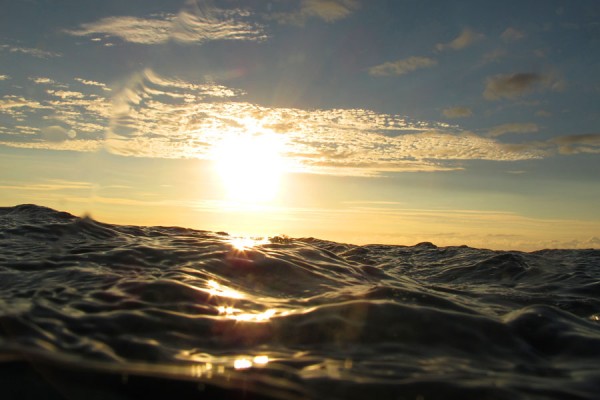
I have seen and photographed these fellows a few times. Endemic to the Central Pacific, the species is commonly seen in dives on the west coast of Hawai’i. The surprise this time was what I found nearby. A flash of bright white is quickly spotted in the beam of my light as I explore the cave. Two spots appeared on the cave roof. The first is the nudibranch, quickly recognized as a Fellows Nudibranch.
I take a couple photos, even though I have seen this species often enough before. I do not immediately notice that the second spot, somewhat hidden in a crevice, is not the same. Upon another look it turns out to be an egg mass, bright white like the slug that laid it. A neat spiral of white eggs against the algae covered rock.
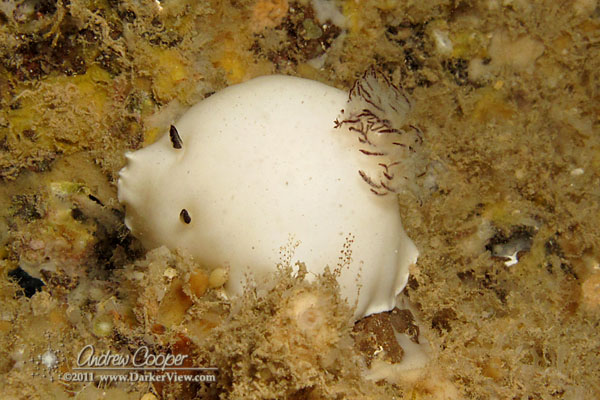
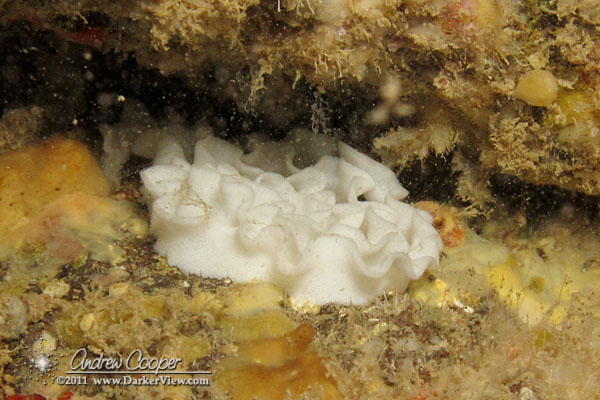
Called Black Point by most divers, found as Malae Point on maps, whatever the name it is a great dive area. The plan is simple, rendezvous at Kohala Divers. Some folks need fills, and others need to toss their gear into one of the 4WD vehicles needed to reach the shoreline. The Kohala coast is a diver’s delight, just about anywhere you can get to the water you will find a good dive site. But there are few easy access points, anything else requires a rough ride down rocky roads to the water. We have a few routes we have explored, this weekend we would use one of our favorites, a small strand we have named Lone Kiawe Beach.

Just out from the beach are several great caves in about 30-40ft of water. These are pretty big caves, with multiple entrances through the heavy coral. Perhaps they were originally lava tubes, though eons of wave action have sculpted and expanded the caverns to include numerous nooks and shelves. Many are in a ledge about 20-30ft below the surface, a structure that may have once been a shoreline during some age of lower sea level. Lobsters, nudibranch, cowries and more to be found during a careful exploration. I attempt to move slowly to avoid stirring up silt. Adjusting my buoyancy I hover and probe the recesses with the light. Dozens of red ‘ala’ihi scatter, avoiding the beam, withdrawing into narrow places I cannot reach. Here and there ‘upāpalu hover, awaiting the night to leave the cave and hunt.

We spend our surface interval talking story in the shade of the large kiawe tree. Breaking out drinks and munchies there is time to simply enjoy good company and celebrate the experience. Sit back, gaze at the blue water and remember… We live in Hawai’i.
The second dive goes much as the first. Nothing particularly spectacular found on the dives. No great photos on the card when I downloaded the SD card. Just a nice morning spent underwater on a beautiful Kohala day. Returning to Kawaihae we celebrate yet another local experience, burgers at Kohala Burger and Taco. A day to remember.